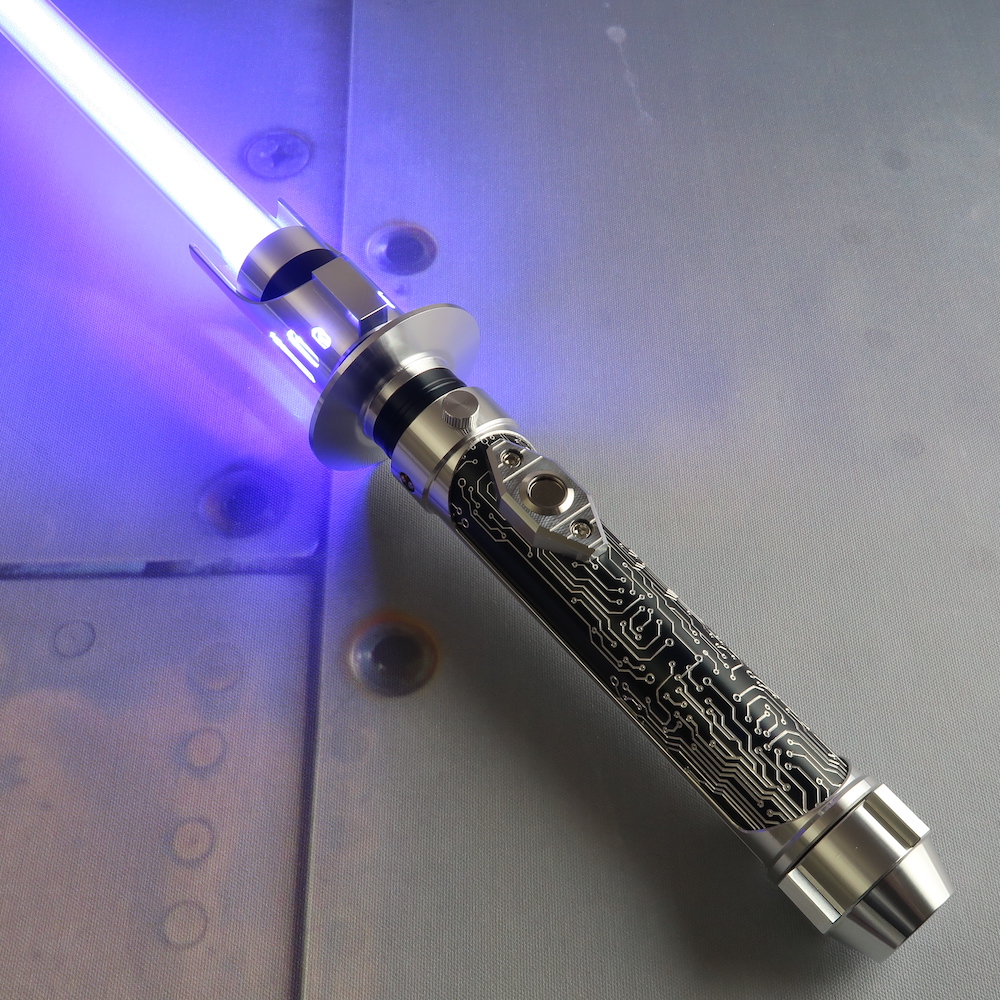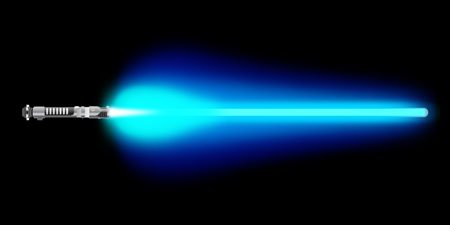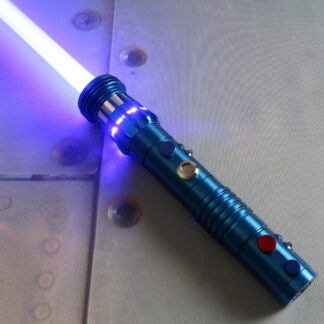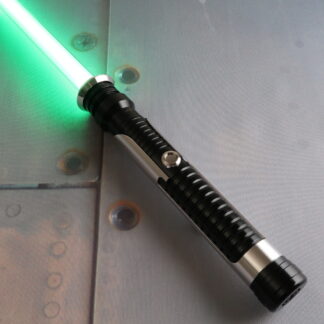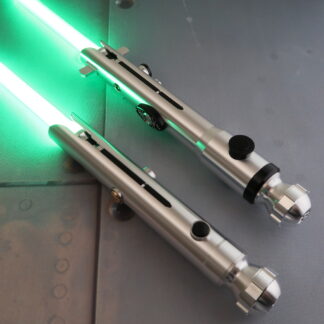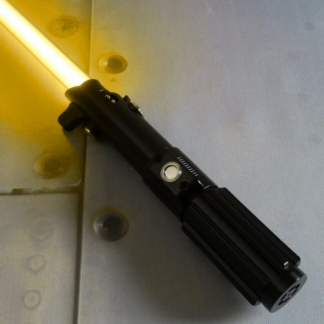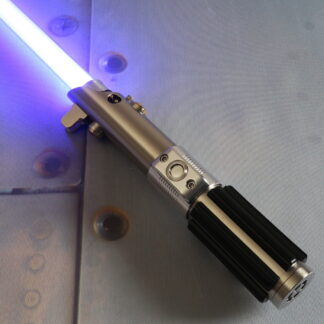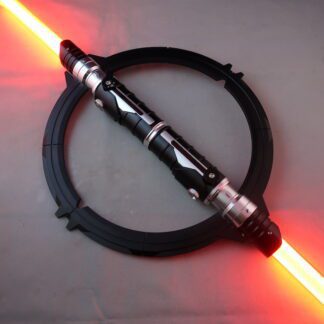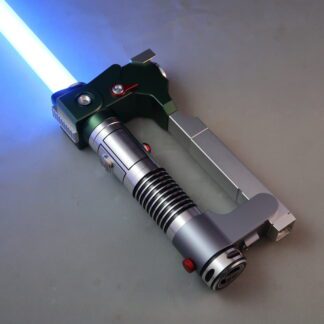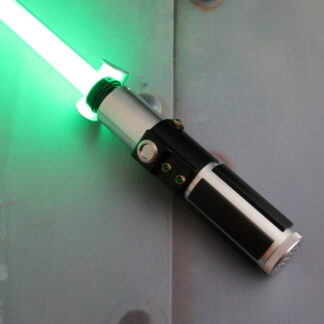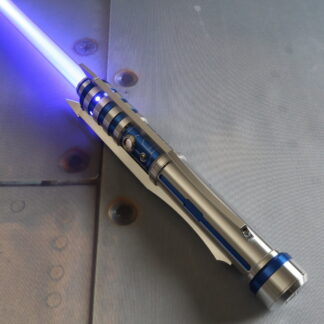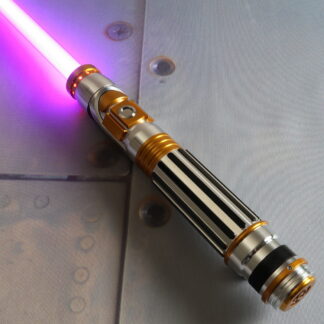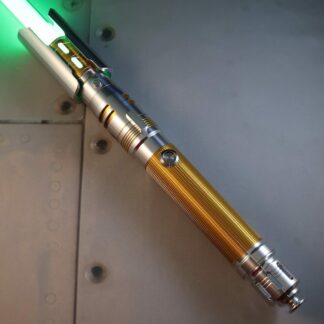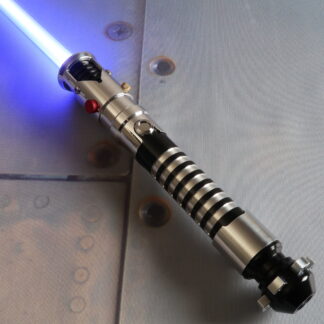A Deeper Look At Lightsaber Form IV: Ataru Combat Style
Form III, Soresu, emphasizes defense almost to the exclusion of all other aspects of combat. This form, while highly effective within its limits, has the obvious drawback of giving the practitioner few attacking options. During the era when lightsaber combat forms were developed, the limitations of Soresu form soon became apparent, and the form that eventually arose in its place was conceived to address its shortcomings.
As a result, Lightsaber Form IV (4), known as Ataru, places as much stress on offense as Soresu does on defense—it is also called the Aggression Form for a very good reason. Placing relentless offense where Soresu placed defense, Ataru combines Force-enhanced acrobatics with a rapid, continuous barrage of attacks, which is why Star Wars’ Lightsaber Form IV is one of the most popular for lightsaber duelists. Its dynamic, visually thrilling style makes it the most eye-catching lightsaber combat form in galaxy history.
Because Ataru relies on momentum and agility, users of the Ataru lightsaber form abruptly launch into spinning strikes, flips, and airborne assaults that overwhelm an opponent before they can counter. Lightsaber battles that feature this form are truly a sight to see. Ataru boasts some extremely well-known practitioners, as well. We’ll take a closer look at these famous Form IV wielders later on this page, so keep your saber at the ready and read on.
Master The Ataru Lightsaber Form With a Custom Saber
The Uses of Ataru Lightsaber Form
Practitioners of the Star Wars Ataru Form unleash a quick torrent of lightsaber strikes with the aim of breaking through the opponent’s defenses and bringing the battle to a speedy conclusion. Their approach involves blows from multiple angles and positions as each strike fluidly transitions into the next, resulting in a continuous offensive flurry that is extremely difficult to defend against.
The other salient characteristic of the Ataru stance is its reliance on acrobatics—flips, leaps, somersaults, etc.—as a means of swiftly adjusting the practitioner’s bodily orientation and enabling them to strike from a potentially unexpected angle.
As this kind of activity is physically demanding, the Ataru practitioner typically draws upon the Force to augment their movements and allow them to perform feats beyond their standard capabilities, which permits the saber wielder to strike at and maneuver around their opponent with extraordinary speed and dexterity.
Even with the Force, however, the user of Lightsaber Combat Form IV is unlikely to be able to sustain their attack for an extended period. Unlike Soresu, the Star Wars Ataru form is not designed for lengthy skirmishes. Win, lose, or draw, the Ataru expert will not be in the heat of battle for long.
Lightsabers To Use With Ataru
Strengths of Ataru & Ideal Lightsabers
Lightsaber Form IV excels in fast-paced, high-intensity combat where speed and mobility are key. Its greatest strength lies in explosive momentum—practitioners unleash rapid chains of strikes that can overwhelm slower opponents before they have a chance to react. Force-assisted flips, spins, and acrobatic maneuvers allow users to attack from unpredictable angles and reposition themselves instantly, making Ataru one of the most visually dynamic and hard-to-counter forms in lightsaber combat.
Ataru excels in single-opponent lightsaber duels, where a swift and aggressive success is possible. Unlike Form I and Form VI, which require more durable lightsabers, it is not well-suited for crowd control or extended battles. Still, its relentless pressure often makes those limitations irrelevant in one-on-one combat. For those looking to master Ataru, an agile, lightweight, single-bladed lightsaber is the quintessential choice. Combat sabers with balanced hilts, narrow-neck emitters, or single blades provide optimal control and speed for the fluid strikes that define this aggressive form.
Shortcomings of Ataru Form
Ataru is essentially the inverse of martial-arts-inspired Form III: Soresu, and as you might expect, its main drawback is also the inverse of Soresu’s protection-focused combat style. Where Soresu is almost wholly focused on defense, Ataru is all about offense and includes few defensive moves and tactics.
Consequently, the form tends to be inadequate in situations where the practitioner must contend with multiple opponents, as an Ataru attack can be directed against only one enemy at a time and leaves the assailant vulnerable to other foes in the vicinity. Furthermore, the explosive energy of Ataru is physically exhausting, making it difficult to sustain a prolonged attack if victory is not secured quickly.
This form also doesn’t work well in confined spaces due to the need for room to perform acrobatic maneuvers. Unlike crowd-control-oriented Form I: Shii-Cho or the more patient pacing of Form VI: Niman, Ataru relies on high-speed movement and momentum, which can be challenging to maintain in less spacious environments.
Ataru Lightsaber Form, The Jedi Tradition & Practitioners
Lightsaber Form IV: Ataru has earned its place in Jedi and Sith history as one of the most iconic and visually remarkable forms of lightsaber combat. Its eye-catching acrobatic maneuvers and relentless aggression have cemented it as a favorite among Force users who value speed, precision, and overwhelming offense.
While not ideal for drawn-out lightsaber dueling or defensive stands, Ataru’s high-risk, high-reward nature left a lasting impression on galactic combat styles. Some of the most recognizable Force wielders in Star Wars canon have adopted this form or used it before advancing to other techniques:
- Yoda: Yoda famously used Ataru during his duel with Count Dooku on Geonosis. Always impressive to watch in battle, he used his small stature as a strategic advantage, perfectly executing the form’s signature momentum and acrobatics.
- Ahsoka Tano: Known for her dual-wielding Jar’Kai variation of Ataru, Ahsoka often blends mobility and agility into her battles.
- Anakin Skywalker: Before becoming Darth Vader, Anakin integrated Ataru’s speed and agility alongside the raw power of Form V: Djem So, laying the foundation for the fearsome lightsaber skills he would carry into the Dark Side.
- Qui-Gon Jinn: Jedi Master Qui-Gon Jinn preferred Ataru’s flowing, aggressive style to bring swift resolution to duels, a signature approach of Jedi Consulars wielding green-bladed lightsabers.
Compared to the elegance and finesse of Form II, or the unshakable defense of Form III, Form IV excels when the goal is domination through sheer energy and surprise. It remains a symbol of boldness used by those who strike first, fast, and with flair. Explore more of our character lightsabers and channel your inner Jedi or Sith with a brand-new custom replica.
Jedi-Inspired Custom Lightsabers
Create Your Own Saber & Join The Community
Learning about lightsaber combat forms, such as Lightsaber Form 4/IV, Ataru, is one of the pleasures of Star Wars fandom. Discover more about your form of choice by reading our post, What Your Lightsaber Combat Form Says About You. You can also learn more about this topic and many others at SaberForum.com, the official discussion board of Ultrasabers. You can also always contact Ultrasabers with your questions or when you require advice or assistance regarding our line of lightsaber products.


